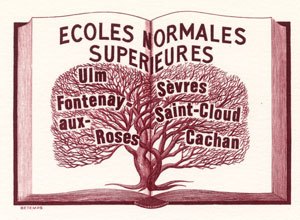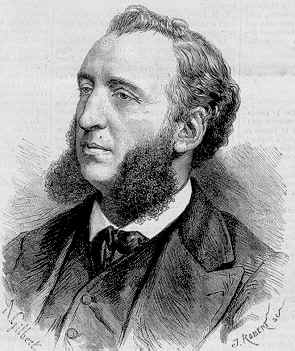
The tradition of Écoles Normales Supérieures dates back to 1794 which led to the creation of the first ENS, dedicated to the training of educators who would train future teachers.
A revolutionary origin
The tradition of Écoles normales supérieures dates back to the Decree of the 9 Brumaire AN III (1794) which led to the creation of the first ENS, dedicated to the training of educators who would train future teachers. This symbolic date can be found on the pediment of ENS in rue d’Ulm in Paris.
Fontenay and Saint-Cloud were created by Jules Ferry
A century later, Jules Ferry and Ferdinand Buisson, who initiated and inspired the French laws of 1881 making primary school compulsory, secular and free, created schools to train teachers for secondary and primary education.
- L'École de Fontenay, for young ladies, was founded by the decree of July 13, 1880
- L'École de Saint-Cloud, for boys, was created by the decree of December 22, 1882
To train professors, inspectors and school directors for primary teaching
- 1887: The decree of January 18, 1887 transformed these schools into Écoles Normales Supérieures of primary education, free and «modern» schools, without compulsory Latin. The students and fellows were recruited through an entrance exam for candidates with a brevet supérieur or a baccalauréat, and signed a ten-year contract.
- 1897: The initial two-year curriculum was extended to three years in 1897.
From primary teaching to secondary and higher education and onto research
- 1945: The decree of February 19, 1945 gives the two Écoles the label of “Écoles normales préparatoires à l'enseignement secondaire”. Students could prepare the CAEC, known today as the CAPES, a recruitment exam to be appointed secondary school teacher.
- 1948: Status of a civil servant trainee is given to School pupils in the 3rd and 4th year.
- 1956: In 1956, the curriculum was extended to four years and students could prepare the “agrégation".
- At the beginning of the 1970s: the premises of Fontenay and Saint-Cloud started to get cramped, and at the same time, there was a political movement to balance out urban development and to fight against centralizing everything in Paris. The idea of setting up an ENS outside the capital was discussed. The project was announced by the Prime Minister in 1975.
The 1980s: a new outlook for the ENS Schools
- In 1981,the competitive entrance examination became jointly run by the 2 schools at Fontenay and Saint-Cloud, and was therefore open to both men and women.
- The decision to set up an ENS in Lyon was formalized by a decree in 1985. This led to the restructuration of all the existing ENS, and the establishment of an ENS in Lyon for STEM in addition to the consolidation of disciplines in Humanities and Social Sciences on the Fontenay site, under the name of ENS de Fontenay Saint-Cloud.
- In September 1987, the district of Gerland welcomed scientists to the brand-new Monod campus, right behind the Halle Tony Garnier. For the first time, an École normale supérieure was established outside the French capital. A selection of pioneer faculty members moved from Saint-Cloud to set up in Lyon and welcomed the 1st class of students.
Video: ENS in Lyon (INA archives)
- In 2000, the Descartes campus in Lyon was established for Humanities and Social Sciences at Fontenay-aux-Roses which had previously hosted the École normale supérieure Fontenay-Saint-Cloud, dedicated to Humanities students. ENS LSH, as it is known, was created on the same site as the Diderot Library.
- In 2005, the INRP, the French Institute for educational research, was located on the Descartes site.
- In 2010, and then in 2011, one unique École, the École normale supérieure de Lyon, was formed, grouping together STEM, Humanities and Social sciences, followed by the establishment, within ENS de Lyon, of the Institut français de l’Éducation, replacing the former INRP.
Jules Ferry's portrait
Jules Ferry (1832-1893) was a French statesman and republican.
One of his important works is the non-clerical organization of public education. Following the republican programme, he proposed to destroy the influence of the clergy in universities and found his own system of republican schooling.
He reorganized the committee of public education (law of 27 February 1880), and proposed a regulation for the conferring of university degrees, which, though rejected, aroused violent polemics because the 7th article took away from the unauthorized religious orders the right to teach.
He finally succeeded in passing his eponymous laws of 16 June 1881 and 28 March 1882, which made primary education in France free, non-clerical and mandatory.
In higher education, the number of professors, called the "Republic's black hussars" because of their Republican support, doubled under his ministry.
[Read more]






